December 12, 2003 -- The Free Willy Keiko Foundation and The Humane Society of the United States (HSUS) reported today that Keiko, the orca whale, died today in the Taknes fjord, Norway, in the company of staff members who have been caring for him there.
Keiko's veterinarian believes that acute pneumonia is the most likely cause of death, though he also cited that Keiko was the second oldest male orca whale ever to have been in captivity.
The two organizations managing Keiko's reintroduction effort expressed sadness at Keiko's death while also heralding his amazing journey.
Yesterday, Keiko exhibited signs of lethargy and lack of appetite. Consultation was continuous between his caretakers and Dr. Cornell. His behavior was still abnormal this morning and his respiratory rate was irregular, but, as is often the case with whales and dolphins in human care, these were advanced signs of his condition. With little warning, Keiko beached himself and died in the early evening local time. A decade ago, Keiko was featured in the Hollywood movie, Free Willy, prompting a worldwide effort to rescue him from poor health, in an attempt to allow him to be the first orca whale ever returned to the wild.
In 1996 Keiko was flown aboard a United Parcel Service plane to a new rehabilitation facility in Newport, Oregon. There he was returned to health and trained in the skills necessary to be a wild whale. In late 1998, Keiko was flown in a U.S. Air Force jet to a sea-pen in Iceland. In the summer of 2002, Keiko joined the company of wild whales and swam nearly 1000 miles to the Norwegian coast. Since then, Keiko has been cared for in a fjord where he was free to come and go by his own choice.
Keiko inspired millions of children to get involved in following his amazing odyssey and helping other whales. Keiko's journey also inspired a massive educational effort around the world and formed the basis for several scientific studies. Thousands of people traveled to Norway in the past year to see Keiko, continuing his legacy as the most famous whale in the world.
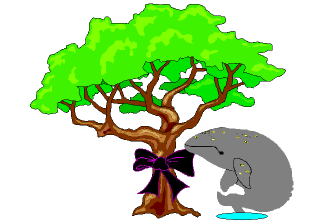
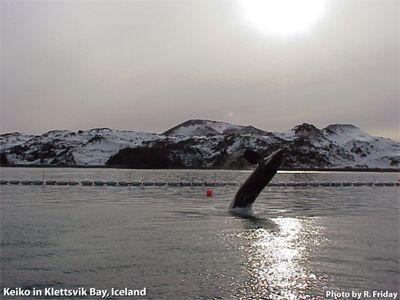
 Pen DiaIN THIS ISSUE:
- Breaking News: Keiko Swims in the Bay!
- Live From Iceland: First-hand audio account of Keiko's Big Swim
- Spread the Word: tell a friend about KeikoWatch
- More Than Keiko: Ocean Futures Society is working to protect our oceans
*************************************
BREAKING NEWS: KEIKO SWIMS IN THE BAY!
Keiko recently passed a major milestone in his training: on Friday, the gate
was opened between the floating bay pen, his home for the past 18 months, and
the larger enclosed Klettsvik Bay. As Ocean Futures staff looked on, Keiko swam
out into the bay, experiencing an ocean environment for the first time since
his capture nearly 20 years ago.
"Incrementally he's exploring a wider and wider area of the bay, just as we hoped,"
Charles Vinick, executive vice-president of Ocean Futures, told Reuters by phone
from Klettsvik Bay.
For more information about Keiko, including the latest news, the first pictures
of him swimming in the bay, and Charles Vinick's first-hand account of the day's
events, check out KeikoWatch at:
http://www.oceanfutures.org.
Pen DiaIN THIS ISSUE:
- Breaking News: Keiko Swims in the Bay!
- Live From Iceland: First-hand audio account of Keiko's Big Swim
- Spread the Word: tell a friend about KeikoWatch
- More Than Keiko: Ocean Futures Society is working to protect our oceans
*************************************
BREAKING NEWS: KEIKO SWIMS IN THE BAY!
Keiko recently passed a major milestone in his training: on Friday, the gate
was opened between the floating bay pen, his home for the past 18 months, and
the larger enclosed Klettsvik Bay. As Ocean Futures staff looked on, Keiko swam
out into the bay, experiencing an ocean environment for the first time since
his capture nearly 20 years ago.
"Incrementally he's exploring a wider and wider area of the bay, just as we hoped,"
Charles Vinick, executive vice-president of Ocean Futures, told Reuters by phone
from Klettsvik Bay.
For more information about Keiko, including the latest news, the first pictures
of him swimming in the bay, and Charles Vinick's first-hand account of the day's
events, check out KeikoWatch at:
http://www.oceanfutures.org.
 *************************************
LIVE FROM ICELAND: FIRST AUDIO REPORT!
Don't miss the first KeikoWatch audio report filed straight from Klettsvik Bay
in Iceland. Late on the evening of March 3, Ocean Futures' Charles Vinick stood
on the overlook to the Bay and recounted the day's events, exclusively for KeikoWatch.
You can hear this first-hand report, including all the details about Keiko's
big swim, from one of the people who has been working to make this day happen.
How exactly you coax a five-ton whale through an ocean gate? Listen to this KeikoWatch
report and find out:
http://www.oceanfutures.org
*************************************
SPREAD THE WORD:
Do you know somebody who'd be interested in KeikoWatch? Help us spread the word
about Keiko and Ocean Futures! Send this e-mail on to a friend.
*************************************
*************************************
LIVE FROM ICELAND: FIRST AUDIO REPORT!
Don't miss the first KeikoWatch audio report filed straight from Klettsvik Bay
in Iceland. Late on the evening of March 3, Ocean Futures' Charles Vinick stood
on the overlook to the Bay and recounted the day's events, exclusively for KeikoWatch.
You can hear this first-hand report, including all the details about Keiko's
big swim, from one of the people who has been working to make this day happen.
How exactly you coax a five-ton whale through an ocean gate? Listen to this KeikoWatch
report and find out:
http://www.oceanfutures.org
*************************************
SPREAD THE WORD:
Do you know somebody who'd be interested in KeikoWatch? Help us spread the word
about Keiko and Ocean Futures! Send this e-mail on to a friend.
*************************************
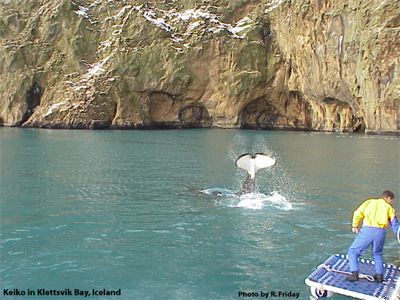 MORE THAN KEIKO:
Learn more about Jean-Michel Cousteau and Ocean Futures! We're dedicated to protecting
our oceans and the life within them -- check out the following site for more
information about what we're doing:
http://www.oceanfutures.org/learn.html
**************************************
This email is being sent to everybody who signed up for the KeikoWatch e-mail
update. To unsubscribe from this list, please respond to this message with the
word "drop" in the message line!
MORE THAN KEIKO:
Learn more about Jean-Michel Cousteau and Ocean Futures! We're dedicated to protecting
our oceans and the life within them -- check out the following site for more
information about what we're doing:
http://www.oceanfutures.org/learn.html
**************************************
This email is being sent to everybody who signed up for the KeikoWatch e-mail
update. To unsubscribe from this list, please respond to this message with the
word "drop" in the message line!
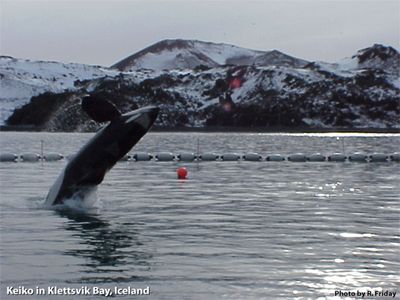 Protect The Ocean And You Protect Yourself
Ocean Futures
325 Chapala Street
Santa Barbara, CA 93101
www.oceanfutures.com
Protect The Ocean And You Protect Yourself
Ocean Futures
325 Chapala Street
Santa Barbara, CA 93101
www.oceanfutures.com





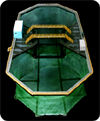
 KEIKO'S FLOATING PEN
Keiko�s floating pen is 250 feet long by 100 feet wide and more than 25 feet deep, and can hold roughly 3.2 million gallons of water � the largest net pen ever built for a marine mammal. The pen weighs 180,000 pounds, including its anchoring system, netting and lift. It is 60 percent larger than his Newport, Ore., pool. The pen has strong nylon mesh sides, allowing Keiko to see the rest of the bay and acoustically interact with his environment. A walkway will surround the pen and support two small buildings, which will include a medical pool, food preparation area, dive locker and generator room. It took 14 semi truckloads to transport components of the pen to Boeing Field for transport to Iceland in June.
Keiko�s View
Keiko will be able to see and hear fish and seabirds from his pen, as well as other killer whales. Small fish and other sea creatures will be able to penetrate the mesh at will, swimming into and out of Keiko�s pool freely.
The Bay Keiko�s pen will be anchored in Klettsvik, a quiet bay in the Westman Islands. The bay is surrounded by cliffs about 600 feet high on three sides, and is about 33 feet deep. The bay is a scenic and popular ecotourism site full of wildlife, including wild killer whales and Atlantic puffins.
img src="stuff/00170th_ki<_6.jpg" height=200 width=200>
KEIKO'S FLOATING PEN
Keiko�s floating pen is 250 feet long by 100 feet wide and more than 25 feet deep, and can hold roughly 3.2 million gallons of water � the largest net pen ever built for a marine mammal. The pen weighs 180,000 pounds, including its anchoring system, netting and lift. It is 60 percent larger than his Newport, Ore., pool. The pen has strong nylon mesh sides, allowing Keiko to see the rest of the bay and acoustically interact with his environment. A walkway will surround the pen and support two small buildings, which will include a medical pool, food preparation area, dive locker and generator room. It took 14 semi truckloads to transport components of the pen to Boeing Field for transport to Iceland in June.
Keiko�s View
Keiko will be able to see and hear fish and seabirds from his pen, as well as other killer whales. Small fish and other sea creatures will be able to penetrate the mesh at will, swimming into and out of Keiko�s pool freely.
The Bay Keiko�s pen will be anchored in Klettsvik, a quiet bay in the Westman Islands. The bay is surrounded by cliffs about 600 feet high on three sides, and is about 33 feet deep. The bay is a scenic and popular ecotourism site full of wildlife, including wild killer whales and Atlantic puffins.
img src="stuff/00170th_ki<_6.jpg" height=200 width=200>
 Temperature
Water temperature ranges from 41-50 degrees Fahrenheit/5-10 degrees Celsius. His pool in Oregon ranged from 48-54 degrees Fahrenheit/9-12 degrees Celsius.
Vestmannaeyjar
Vestmannaeyjar is a town in the Westman Islands southeast of Iceland�s capital Reykjavik on the North Atlantic Ocean. The bay where Keiko will live is located just across the harbor in Vestmannaeyjar.
History
In June, Iceland Prime Minister David Oddsson gave the Free Willy Keiko Foundation permission to return Keiko to his native waters in Iceland. Delegation members then reviewed possible sea pen sites and met with community leaders around the country before deciding on the Westman Islands. Keiko was captured off the coast of Iceland when he was about 2 years old.
Temperature
Water temperature ranges from 41-50 degrees Fahrenheit/5-10 degrees Celsius. His pool in Oregon ranged from 48-54 degrees Fahrenheit/9-12 degrees Celsius.
Vestmannaeyjar
Vestmannaeyjar is a town in the Westman Islands southeast of Iceland�s capital Reykjavik on the North Atlantic Ocean. The bay where Keiko will live is located just across the harbor in Vestmannaeyjar.
History
In June, Iceland Prime Minister David Oddsson gave the Free Willy Keiko Foundation permission to return Keiko to his native waters in Iceland. Delegation members then reviewed possible sea pen sites and met with community leaders around the country before deciding on the Westman Islands. Keiko was captured off the coast of Iceland when he was about 2 years old.

 Staff
10 foundation employees will care for Keiko in Iceland. All are relocating from Oregon.
Visitors
While people will not be able to visit Keiko at his Iceland home to ensure his safe transition into his new environment, people can follow his progress on the Internet at www.oceanfutures.com.
Staff
10 foundation employees will care for Keiko in Iceland. All are relocating from Oregon.
Visitors
While people will not be able to visit Keiko at his Iceland home to ensure his safe transition into his new environment, people can follow his progress on the Internet at www.oceanfutures.com.


 Earth Island Journal
Spring 2000 Vol 15, No 1
Keiko, the orca star of Free Willy fame, continues his journey toward
freedom. September 10, 1999 marked the first anniversary of Keiko's arrival
in the cold waters of Iceland's Westman Islands. With each passing day,
Keiko is behaving more like a wild orca. He has adapted well to the local
tides, winds, storms, and the environment. Keiko is eating nearly half of
his daily feed as live fish. The other half is thrown into the water. (To
discourage Keiko from associating humans with food, he is no longer fed by
hand.) Keiko is chasing birds that land in his hay pen and spending much of
his time underwater.
Blood tests show that Keiko is free of pathogens. Most orcas develop higher
levels of pathogens in captivity Iceland's clear, cold waters seem to have
been the best medicine for all of Keiko's medical problems. Wild orcas have
been seen within one-to-two miles of Keiko's bay pen. Last June, a small pod
of orcas visited Keiko near the sea-pen enclosure. The wild orcas seemed to
be communicating with Keiko. This is an important development since Keiko
eventually must be able to rejoin a wild pod to survive as a free whale.
Genetic and photo identification studies of the local wild orca populations
are giving researchers new information about population numbers, behaviors
and health. This research may even help identify surviving members of
Keiko's long-lost family
Last December, Keiko was released into a larger ocean pen covering one
million square feet. The installation of a fence across the mouth of the bay
has given Keiko an opportunity to explore the bottom of the bay and chase
schools of herring. Keiko now is experiencing wild space on a scale he has
not known since he was violently taken from his mother's side at the age of
two.
There are times when Keiko actually disappears from the view of his human
caretakers. This is a step needed before Keiko can be released to the open
ocean. When that happens, Keiko will become the first captive orca to be
rehabilitated and reintroduced into native waters. While this is important
as a scientific venture, it is also important as a moral gesture. After
visiting so much devastation on the world's marine mammals, it is our moral
obligation to give back to the wild this magnificent and intelligent mammal.
For updates and more information, visit the IMMP website:
earthisland.org/immp.]
-------------------------------
Howard Garrett
Tokitae Orca Conservation Foundation
2403 So. Northbluff Rd.
Greenbank WA 98253
(360) 678-3451
mailto:[email protected]
http://www.rockisland.com/~tokitae/
Earth Island Journal
Spring 2000 Vol 15, No 1
Keiko, the orca star of Free Willy fame, continues his journey toward
freedom. September 10, 1999 marked the first anniversary of Keiko's arrival
in the cold waters of Iceland's Westman Islands. With each passing day,
Keiko is behaving more like a wild orca. He has adapted well to the local
tides, winds, storms, and the environment. Keiko is eating nearly half of
his daily feed as live fish. The other half is thrown into the water. (To
discourage Keiko from associating humans with food, he is no longer fed by
hand.) Keiko is chasing birds that land in his hay pen and spending much of
his time underwater.
Blood tests show that Keiko is free of pathogens. Most orcas develop higher
levels of pathogens in captivity Iceland's clear, cold waters seem to have
been the best medicine for all of Keiko's medical problems. Wild orcas have
been seen within one-to-two miles of Keiko's bay pen. Last June, a small pod
of orcas visited Keiko near the sea-pen enclosure. The wild orcas seemed to
be communicating with Keiko. This is an important development since Keiko
eventually must be able to rejoin a wild pod to survive as a free whale.
Genetic and photo identification studies of the local wild orca populations
are giving researchers new information about population numbers, behaviors
and health. This research may even help identify surviving members of
Keiko's long-lost family
Last December, Keiko was released into a larger ocean pen covering one
million square feet. The installation of a fence across the mouth of the bay
has given Keiko an opportunity to explore the bottom of the bay and chase
schools of herring. Keiko now is experiencing wild space on a scale he has
not known since he was violently taken from his mother's side at the age of
two.
There are times when Keiko actually disappears from the view of his human
caretakers. This is a step needed before Keiko can be released to the open
ocean. When that happens, Keiko will become the first captive orca to be
rehabilitated and reintroduced into native waters. While this is important
as a scientific venture, it is also important as a moral gesture. After
visiting so much devastation on the world's marine mammals, it is our moral
obligation to give back to the wild this magnificent and intelligent mammal.
For updates and more information, visit the IMMP website:
earthisland.org/immp.]
-------------------------------
Howard Garrett
Tokitae Orca Conservation Foundation
2403 So. Northbluff Rd.
Greenbank WA 98253
(360) 678-3451
mailto:[email protected]
http://www.rockisland.com/~tokitae/


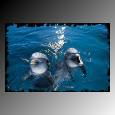 BACK TO HOME PAGE!
BACK TO HOME PAGE!

 Pen DiaIN THIS ISSUE:
- Breaking News: Keiko Swims in the Bay!
- Live From Iceland: First-hand audio account of Keiko's Big Swim
- Spread the Word: tell a friend about KeikoWatch
- More Than Keiko: Ocean Futures Society is working to protect our oceans
*************************************
BREAKING NEWS: KEIKO SWIMS IN THE BAY!
Keiko recently passed a major milestone in his training: on Friday, the gate
was opened between the floating bay pen, his home for the past 18 months, and
the larger enclosed Klettsvik Bay. As Ocean Futures staff looked on, Keiko swam
out into the bay, experiencing an ocean environment for the first time since
his capture nearly 20 years ago.
"Incrementally he's exploring a wider and wider area of the bay, just as we hoped,"
Charles Vinick, executive vice-president of Ocean Futures, told Reuters by phone
from Klettsvik Bay.
For more information about Keiko, including the latest news, the first pictures
of him swimming in the bay, and Charles Vinick's first-hand account of the day's
events, check out KeikoWatch at:
http://www.oceanfutures.org.
Pen DiaIN THIS ISSUE:
- Breaking News: Keiko Swims in the Bay!
- Live From Iceland: First-hand audio account of Keiko's Big Swim
- Spread the Word: tell a friend about KeikoWatch
- More Than Keiko: Ocean Futures Society is working to protect our oceans
*************************************
BREAKING NEWS: KEIKO SWIMS IN THE BAY!
Keiko recently passed a major milestone in his training: on Friday, the gate
was opened between the floating bay pen, his home for the past 18 months, and
the larger enclosed Klettsvik Bay. As Ocean Futures staff looked on, Keiko swam
out into the bay, experiencing an ocean environment for the first time since
his capture nearly 20 years ago.
"Incrementally he's exploring a wider and wider area of the bay, just as we hoped,"
Charles Vinick, executive vice-president of Ocean Futures, told Reuters by phone
from Klettsvik Bay.
For more information about Keiko, including the latest news, the first pictures
of him swimming in the bay, and Charles Vinick's first-hand account of the day's
events, check out KeikoWatch at:
http://www.oceanfutures.org.
 *************************************
LIVE FROM ICELAND: FIRST AUDIO REPORT!
Don't miss the first KeikoWatch audio report filed straight from Klettsvik Bay
in Iceland. Late on the evening of March 3, Ocean Futures' Charles Vinick stood
on the overlook to the Bay and recounted the day's events, exclusively for KeikoWatch.
You can hear this first-hand report, including all the details about Keiko's
big swim, from one of the people who has been working to make this day happen.
How exactly you coax a five-ton whale through an ocean gate? Listen to this KeikoWatch
report and find out:
http://www.oceanfutures.org
*************************************
SPREAD THE WORD:
Do you know somebody who'd be interested in KeikoWatch? Help us spread the word
about Keiko and Ocean Futures! Send this e-mail on to a friend.
*************************************
*************************************
LIVE FROM ICELAND: FIRST AUDIO REPORT!
Don't miss the first KeikoWatch audio report filed straight from Klettsvik Bay
in Iceland. Late on the evening of March 3, Ocean Futures' Charles Vinick stood
on the overlook to the Bay and recounted the day's events, exclusively for KeikoWatch.
You can hear this first-hand report, including all the details about Keiko's
big swim, from one of the people who has been working to make this day happen.
How exactly you coax a five-ton whale through an ocean gate? Listen to this KeikoWatch
report and find out:
http://www.oceanfutures.org
*************************************
SPREAD THE WORD:
Do you know somebody who'd be interested in KeikoWatch? Help us spread the word
about Keiko and Ocean Futures! Send this e-mail on to a friend.
*************************************
 MORE THAN KEIKO:
Learn more about Jean-Michel Cousteau and Ocean Futures! We're dedicated to protecting
our oceans and the life within them -- check out the following site for more
information about what we're doing:
http://www.oceanfutures.org/learn.html
**************************************
This email is being sent to everybody who signed up for the KeikoWatch e-mail
update. To unsubscribe from this list, please respond to this message with the
word "drop" in the message line!
MORE THAN KEIKO:
Learn more about Jean-Michel Cousteau and Ocean Futures! We're dedicated to protecting
our oceans and the life within them -- check out the following site for more
information about what we're doing:
http://www.oceanfutures.org/learn.html
**************************************
This email is being sent to everybody who signed up for the KeikoWatch e-mail
update. To unsubscribe from this list, please respond to this message with the
word "drop" in the message line!
 Protect The Ocean And You Protect Yourself
Ocean Futures
325 Chapala Street
Santa Barbara, CA 93101
www.oceanfutures.com
Protect The Ocean And You Protect Yourself
Ocean Futures
325 Chapala Street
Santa Barbara, CA 93101
www.oceanfutures.com






 KEIKO'S FLOATING PEN
Keiko�s floating pen is 250 feet long by 100 feet wide and more than 25 feet deep, and can hold roughly 3.2 million gallons of water � the largest net pen ever built for a marine mammal. The pen weighs 180,000 pounds, including its anchoring system, netting and lift. It is 60 percent larger than his Newport, Ore., pool. The pen has strong nylon mesh sides, allowing Keiko to see the rest of the bay and acoustically interact with his environment. A walkway will surround the pen and support two small buildings, which will include a medical pool, food preparation area, dive locker and generator room. It took 14 semi truckloads to transport components of the pen to Boeing Field for transport to Iceland in June.
Keiko�s View
Keiko will be able to see and hear fish and seabirds from his pen, as well as other killer whales. Small fish and other sea creatures will be able to penetrate the mesh at will, swimming into and out of Keiko�s pool freely.
The Bay Keiko�s pen will be anchored in Klettsvik, a quiet bay in the Westman Islands. The bay is surrounded by cliffs about 600 feet high on three sides, and is about 33 feet deep. The bay is a scenic and popular ecotourism site full of wildlife, including wild killer whales and Atlantic puffins.
img src="stuff/00170th_ki<_6.jpg" height=200 width=200>
KEIKO'S FLOATING PEN
Keiko�s floating pen is 250 feet long by 100 feet wide and more than 25 feet deep, and can hold roughly 3.2 million gallons of water � the largest net pen ever built for a marine mammal. The pen weighs 180,000 pounds, including its anchoring system, netting and lift. It is 60 percent larger than his Newport, Ore., pool. The pen has strong nylon mesh sides, allowing Keiko to see the rest of the bay and acoustically interact with his environment. A walkway will surround the pen and support two small buildings, which will include a medical pool, food preparation area, dive locker and generator room. It took 14 semi truckloads to transport components of the pen to Boeing Field for transport to Iceland in June.
Keiko�s View
Keiko will be able to see and hear fish and seabirds from his pen, as well as other killer whales. Small fish and other sea creatures will be able to penetrate the mesh at will, swimming into and out of Keiko�s pool freely.
The Bay Keiko�s pen will be anchored in Klettsvik, a quiet bay in the Westman Islands. The bay is surrounded by cliffs about 600 feet high on three sides, and is about 33 feet deep. The bay is a scenic and popular ecotourism site full of wildlife, including wild killer whales and Atlantic puffins.
img src="stuff/00170th_ki<_6.jpg" height=200 width=200>
 Temperature
Water temperature ranges from 41-50 degrees Fahrenheit/5-10 degrees Celsius. His pool in Oregon ranged from 48-54 degrees Fahrenheit/9-12 degrees Celsius.
Vestmannaeyjar
Vestmannaeyjar is a town in the Westman Islands southeast of Iceland�s capital Reykjavik on the North Atlantic Ocean. The bay where Keiko will live is located just across the harbor in Vestmannaeyjar.
History
In June, Iceland Prime Minister David Oddsson gave the Free Willy Keiko Foundation permission to return Keiko to his native waters in Iceland. Delegation members then reviewed possible sea pen sites and met with community leaders around the country before deciding on the Westman Islands. Keiko was captured off the coast of Iceland when he was about 2 years old.
Temperature
Water temperature ranges from 41-50 degrees Fahrenheit/5-10 degrees Celsius. His pool in Oregon ranged from 48-54 degrees Fahrenheit/9-12 degrees Celsius.
Vestmannaeyjar
Vestmannaeyjar is a town in the Westman Islands southeast of Iceland�s capital Reykjavik on the North Atlantic Ocean. The bay where Keiko will live is located just across the harbor in Vestmannaeyjar.
History
In June, Iceland Prime Minister David Oddsson gave the Free Willy Keiko Foundation permission to return Keiko to his native waters in Iceland. Delegation members then reviewed possible sea pen sites and met with community leaders around the country before deciding on the Westman Islands. Keiko was captured off the coast of Iceland when he was about 2 years old.

 Staff
10 foundation employees will care for Keiko in Iceland. All are relocating from Oregon.
Visitors
While people will not be able to visit Keiko at his Iceland home to ensure his safe transition into his new environment, people can follow his progress on the Internet at www.oceanfutures.com.
Staff
10 foundation employees will care for Keiko in Iceland. All are relocating from Oregon.
Visitors
While people will not be able to visit Keiko at his Iceland home to ensure his safe transition into his new environment, people can follow his progress on the Internet at www.oceanfutures.com.


 Earth Island Journal
Spring 2000 Vol 15, No 1
Keiko, the orca star of Free Willy fame, continues his journey toward
freedom. September 10, 1999 marked the first anniversary of Keiko's arrival
in the cold waters of Iceland's Westman Islands. With each passing day,
Keiko is behaving more like a wild orca. He has adapted well to the local
tides, winds, storms, and the environment. Keiko is eating nearly half of
his daily feed as live fish. The other half is thrown into the water. (To
discourage Keiko from associating humans with food, he is no longer fed by
hand.) Keiko is chasing birds that land in his hay pen and spending much of
his time underwater.
Blood tests show that Keiko is free of pathogens. Most orcas develop higher
levels of pathogens in captivity Iceland's clear, cold waters seem to have
been the best medicine for all of Keiko's medical problems. Wild orcas have
been seen within one-to-two miles of Keiko's bay pen. Last June, a small pod
of orcas visited Keiko near the sea-pen enclosure. The wild orcas seemed to
be communicating with Keiko. This is an important development since Keiko
eventually must be able to rejoin a wild pod to survive as a free whale.
Genetic and photo identification studies of the local wild orca populations
are giving researchers new information about population numbers, behaviors
and health. This research may even help identify surviving members of
Keiko's long-lost family
Last December, Keiko was released into a larger ocean pen covering one
million square feet. The installation of a fence across the mouth of the bay
has given Keiko an opportunity to explore the bottom of the bay and chase
schools of herring. Keiko now is experiencing wild space on a scale he has
not known since he was violently taken from his mother's side at the age of
two.
There are times when Keiko actually disappears from the view of his human
caretakers. This is a step needed before Keiko can be released to the open
ocean. When that happens, Keiko will become the first captive orca to be
rehabilitated and reintroduced into native waters. While this is important
as a scientific venture, it is also important as a moral gesture. After
visiting so much devastation on the world's marine mammals, it is our moral
obligation to give back to the wild this magnificent and intelligent mammal.
For updates and more information, visit the IMMP website:
earthisland.org/immp.]
-------------------------------
Howard Garrett
Tokitae Orca Conservation Foundation
2403 So. Northbluff Rd.
Greenbank WA 98253
(360) 678-3451
mailto:[email protected]
http://www.rockisland.com/~tokitae/
Earth Island Journal
Spring 2000 Vol 15, No 1
Keiko, the orca star of Free Willy fame, continues his journey toward
freedom. September 10, 1999 marked the first anniversary of Keiko's arrival
in the cold waters of Iceland's Westman Islands. With each passing day,
Keiko is behaving more like a wild orca. He has adapted well to the local
tides, winds, storms, and the environment. Keiko is eating nearly half of
his daily feed as live fish. The other half is thrown into the water. (To
discourage Keiko from associating humans with food, he is no longer fed by
hand.) Keiko is chasing birds that land in his hay pen and spending much of
his time underwater.
Blood tests show that Keiko is free of pathogens. Most orcas develop higher
levels of pathogens in captivity Iceland's clear, cold waters seem to have
been the best medicine for all of Keiko's medical problems. Wild orcas have
been seen within one-to-two miles of Keiko's bay pen. Last June, a small pod
of orcas visited Keiko near the sea-pen enclosure. The wild orcas seemed to
be communicating with Keiko. This is an important development since Keiko
eventually must be able to rejoin a wild pod to survive as a free whale.
Genetic and photo identification studies of the local wild orca populations
are giving researchers new information about population numbers, behaviors
and health. This research may even help identify surviving members of
Keiko's long-lost family
Last December, Keiko was released into a larger ocean pen covering one
million square feet. The installation of a fence across the mouth of the bay
has given Keiko an opportunity to explore the bottom of the bay and chase
schools of herring. Keiko now is experiencing wild space on a scale he has
not known since he was violently taken from his mother's side at the age of
two.
There are times when Keiko actually disappears from the view of his human
caretakers. This is a step needed before Keiko can be released to the open
ocean. When that happens, Keiko will become the first captive orca to be
rehabilitated and reintroduced into native waters. While this is important
as a scientific venture, it is also important as a moral gesture. After
visiting so much devastation on the world's marine mammals, it is our moral
obligation to give back to the wild this magnificent and intelligent mammal.
For updates and more information, visit the IMMP website:
earthisland.org/immp.]
-------------------------------
Howard Garrett
Tokitae Orca Conservation Foundation
2403 So. Northbluff Rd.
Greenbank WA 98253
(360) 678-3451
mailto:[email protected]
http://www.rockisland.com/~tokitae/


 BACK TO HOME PAGE!
BACK TO HOME PAGE!